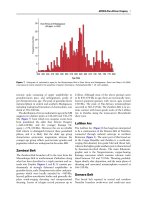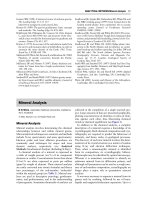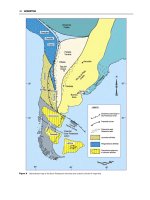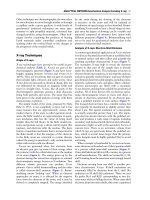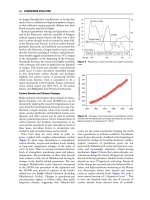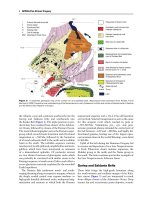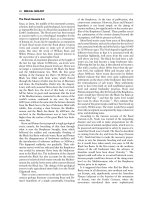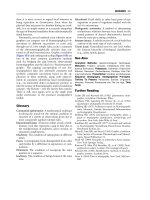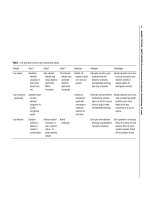Encyclopedia of geology, five volume set, volume 1 5 (encyclopedia of geology series) ( PDFDrive ) 46
Bạn đang xem bản rút gọn của tài liệu. Xem và tải ngay bản đầy đủ của tài liệu tại đây (110.04 KB, 1 trang )
AFRICA/Pan-African Orogeny 7
Figure 7 Histogram of radiometric ages for the Mozambique Belt of East Africa and Madagascar. Data from Meert JG (2003)
A synopsis of events related to the assembly of eastern Gondwana. Tectonophysics 362: 1 40, with updates.
tectonic units consisting of upper amphibolite to
granulite-facies para- and orthogneisses, partly of
pre-Neoproterozoic age. The peak of granulite-facies
metamorphism in central and southern Madagascar,
including widespread formation of charnockites, was
dated at 550–560 Ma.
The distribution of zircon radiometric ages in the MB
suggests two distinct peaks at 610–660 and 530–570
Ma (Figure 7) from which two orogenic events have
been postulated, the older East African Orogeny
($660–610 Ma) and the younger Kuunga Orogeny ($570–530 Ma). However, the are no reliable
field criteria to distinguish between these postulated
phases, and it is likely that the older age group
characterizes syntectonic magmatism whereas the
younger age group reflects post-tectonic granites and
pegmatites which are widespread in the entire MB.
Zambezi Belt
The Zambezi Belt branches off to the west from the
Mozambique Belt in northernmost Zimbabwe along
what has been described as a triple junction and extends into Zambia (Figures 1 and 8). It consists predominantly of strongly deformed amphibolite- to
granulite-facies, early Neoproterozoic ortho- and paragneisses which were locally intruded by $860 Ma,
layered gabbro-anorthosite bodies and generally displays south-verging thrusting and transpressional
shearing. Lenses of eclogite record pressures up to
23 kbar. Although most of the above gneisses seem
to be 850–870 Ma in age, there are tectonically interlayered granitoid gneisses with zircon ages around
1100 Ma. The peak of Pan-African metamorphism
occurred at 540–535 Ma. The Zambezi Belt is in tectonic contact with lower-grade rocks of the Lufilian
Arc in Zambia along the transcurrent Mwembeshi
shear zone.
Lufilian Arc
The Lufilian Arc (Figure 8) has long been interpreted
to be a continuation of the Damara Belt of Namibia,
connected through isolated outcrops in northern
Botswana (Figure 1). The outer part of this broad arc
in the Congo Republic and Zambia is a north-eastverging thin-skinned, low-grade fold and thrust belt,
whereas the higher-grade southern part is characterized
by basement-involved thrusts. The main lithostratigraphic unit is the Neoproterozoic, copper-bearing
Katanga succession which contains volcanic rocks
dated between 765 and 735 Ma. Thrusting probably
began shortly after deposition, and the main phase of
thrusting and associated metamorphism occurred at
566–550 Ma.
Damara Belt
This broad belt exposed in central and northern
Namibia branches north-west and south-east near
